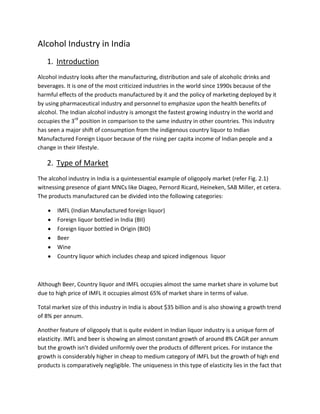The alcohol industry in India has seen rapid growth and is now the third largest in the world. It is dominated by a few large multinational companies that produce Indian Made Foreign Liquor (IMFL), which has increased in popularity over traditional country liquor. The industry is regulated by heavy government controls over licensing, production, distribution and taxation. Brand recognition, geographic diversity of operations, and product variety are keys to success in this high risk market, which is also attracting significant foreign interest due to India's rising whiskey consumption.








